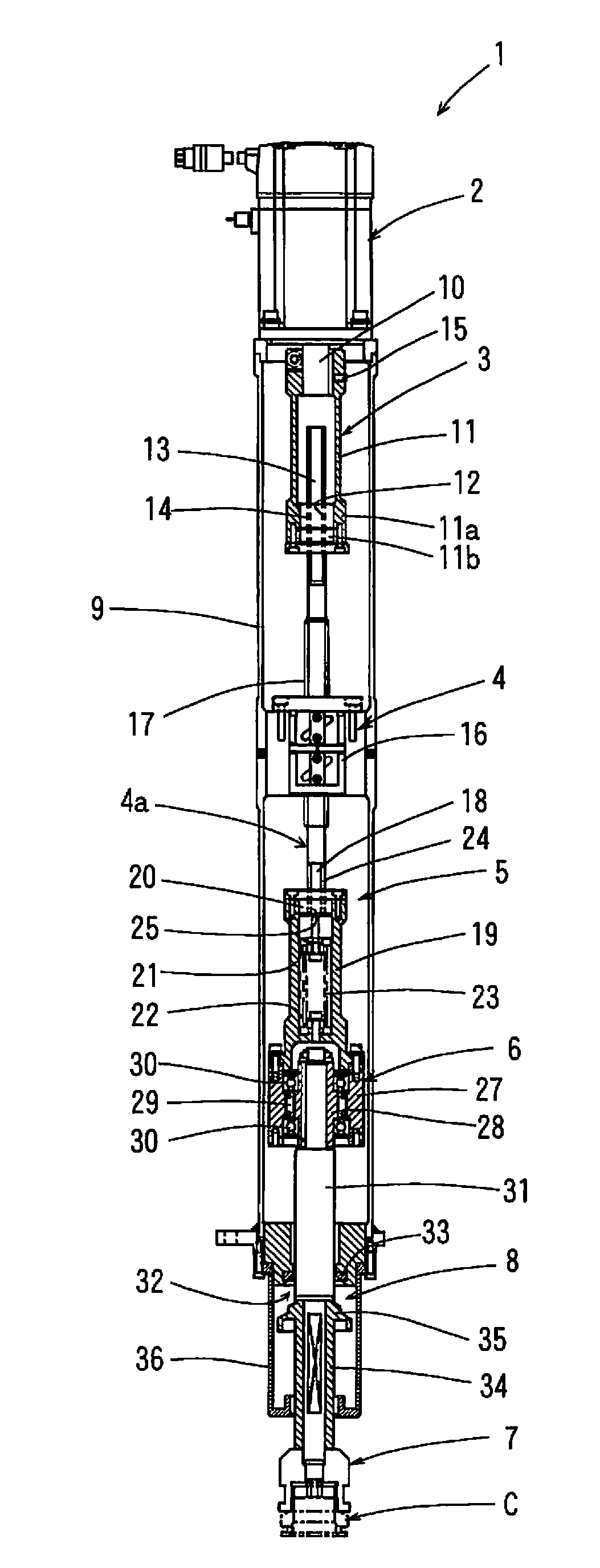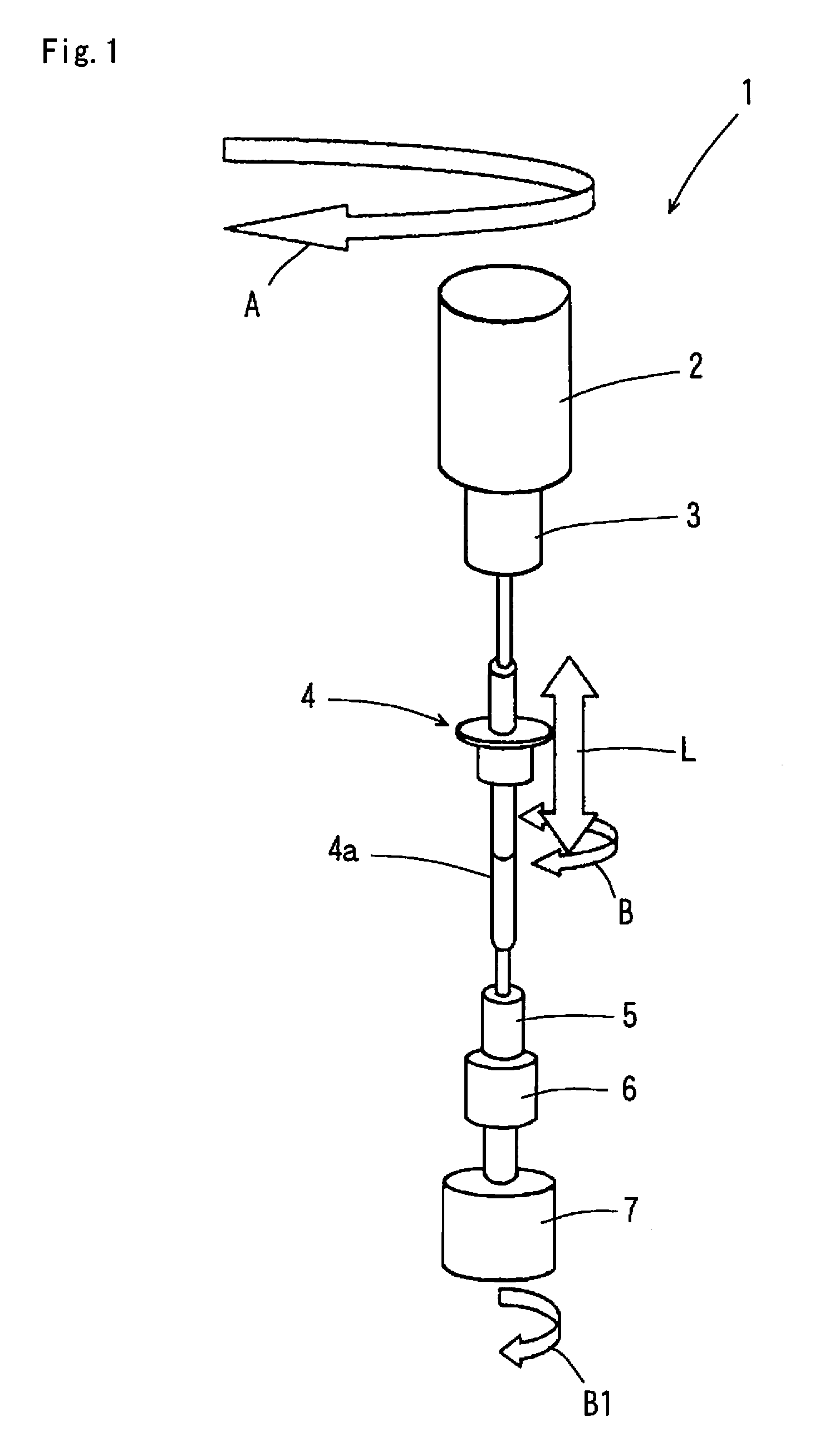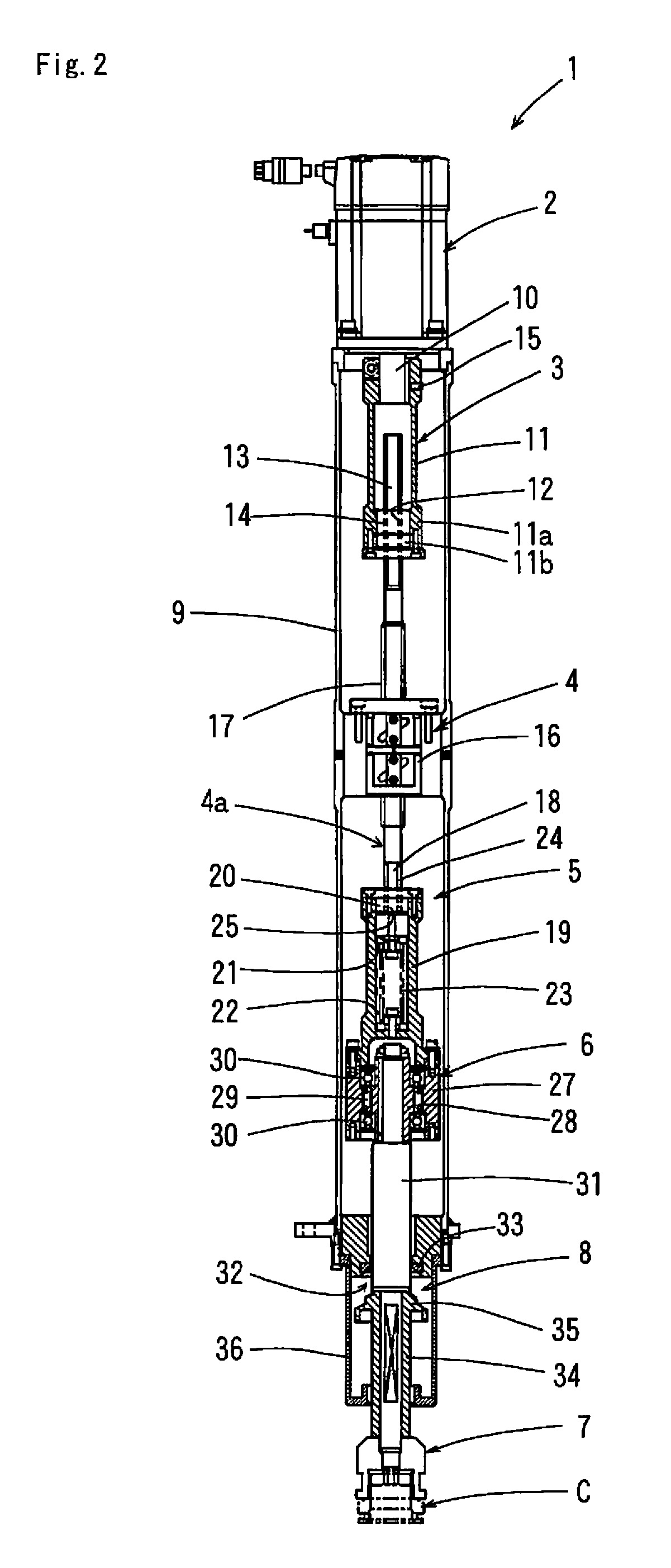Capper head
a technology of capper head and screw head, which is applied in the direction of caps, rotating screw stopper insertion, application, etc., can solve the problems of high production cost and outside, and achieve the effects of low cost, simple structure and preventing the unwinding of the tightened cap
- Summary
- Abstract
- Description
- Claims
- Application Information
AI Technical Summary
Benefits of technology
Problems solved by technology
Method used
Image
Examples
Embodiment Construction
[0024]An embodiment of the capper head in accordance with the present invention will be described below based on the appended drawings. FIG. 1 is a schematic perspective view illustrating an embodiment of the capper head in accordance with the present invention. FIG. 2 is a vertical cross-sectional view of the capper head shown in FIG. 1.
[0025]As shown in FIG. 1, a capper head 1 comprises, from the top thereof, a servo motor 2 that is revolved and rotated, a sliding engagement section 3 that transmits the rotation of a motor output shaft of the servo motor 2, but allows the engagement portion to move in the axial direction and can be extended as a whole, a screw mechanism 4 linked to the output side of the sliding engagement section 3, and a chuck 7 linked to a screw output shaft 4a of the screw mechanism 4. The screw output shaft 4a is provided with a stroke difference absorption section 5 and a unidirectional clutch section 6 linked to the output side of the stroke difference abso...
PUM
 Login to View More
Login to View More Abstract
Description
Claims
Application Information
 Login to View More
Login to View More - R&D
- Intellectual Property
- Life Sciences
- Materials
- Tech Scout
- Unparalleled Data Quality
- Higher Quality Content
- 60% Fewer Hallucinations
Browse by: Latest US Patents, China's latest patents, Technical Efficacy Thesaurus, Application Domain, Technology Topic, Popular Technical Reports.
© 2025 PatSnap. All rights reserved.Legal|Privacy policy|Modern Slavery Act Transparency Statement|Sitemap|About US| Contact US: help@patsnap.com



